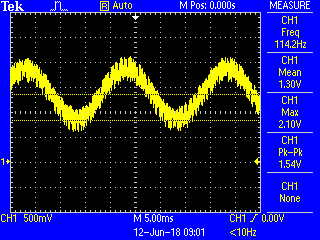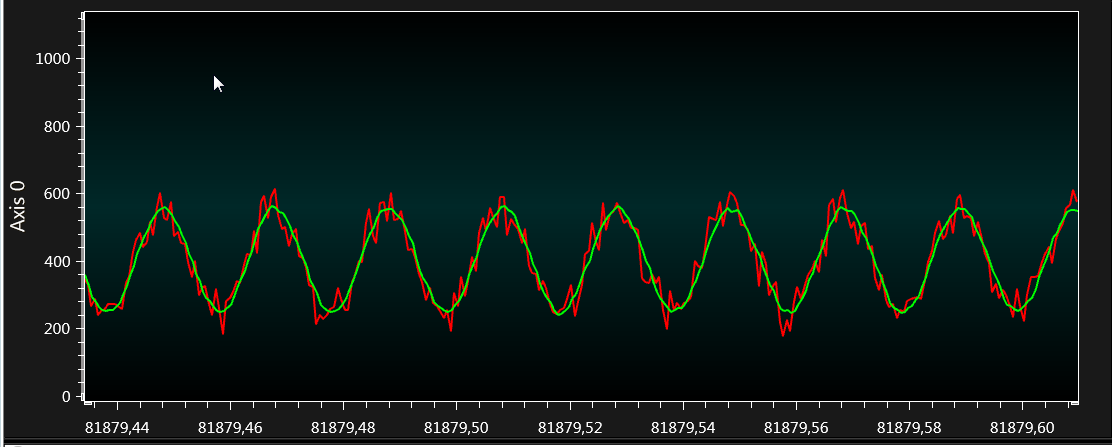4.5.4.1 AC Signal With Random Noise
- ADC2 computation mode: Burst Average mode
- Input signal: AC 1V peak-to-peak, frequency 50 Hz, and offset at 1.25V + random noise 0.5V peak-to-peak
- Press push button S1 on the HPC board
- Verify the computation mode number in the Data Visualizer graph is 4
- Verify that LED D4 is illuminated
- Configure Signal & Noise Generator to generate an AC signal of amplitude ~1V, frequency 50 Hz, and offset at 1.25V
- Enable random noise with 0.5V peak-to-peak
- Verify the input signal using an
oscilloscope. The expected result is as shown in Figure 4-14
Figure 4-14. AC Signal With Random Noise Oscilloscope Capture 
The Data Visualizer graph is as shown in Figure 4-15. The red colored signal is an AC input signal (ADRES value), the green colored signal is filtered signal (ADFLTR value).
From the graph, it can be seen that the noise has been removed from the input noisy signal and relatively clean AC signal is illustrated in Figure 4-15.
In this mode, with single ADC conversion trigger, all the data samples are accumulated up to the configured number of samples and after accumulating all samples, the average value of the accumulated sample is attained by reading the ADFLTR value which results is noise suppression in given input AC signal.
In the application, ADC Conversion Time for a single sample is configured to 11.5 μs. So with a burst of 32 samples, total conversion time is 11.5 x 32 = 368 μs. It means the maximum sampling rate can be configured to 2.7 kHz (1/368 μs) with 32 samples using this mode.
With the burst of 64 samples, the maximum sampling rate can be achieved is 1.3 kHz (1/736 μs).
Burst average mode helps in flattening out the noise from the AC signal and the clean AC signal is displayed.

Pros: Noise suppression from an AC signal can be achieved using the Burst Average mode.
- Sample accumulation is limited to 64 samples
- ADC sampling rate is affected by the number of samples accumulated in a single burst. Total conversion time for m samples is the multiplication of conversion time for one sample and m, the number of samples.
